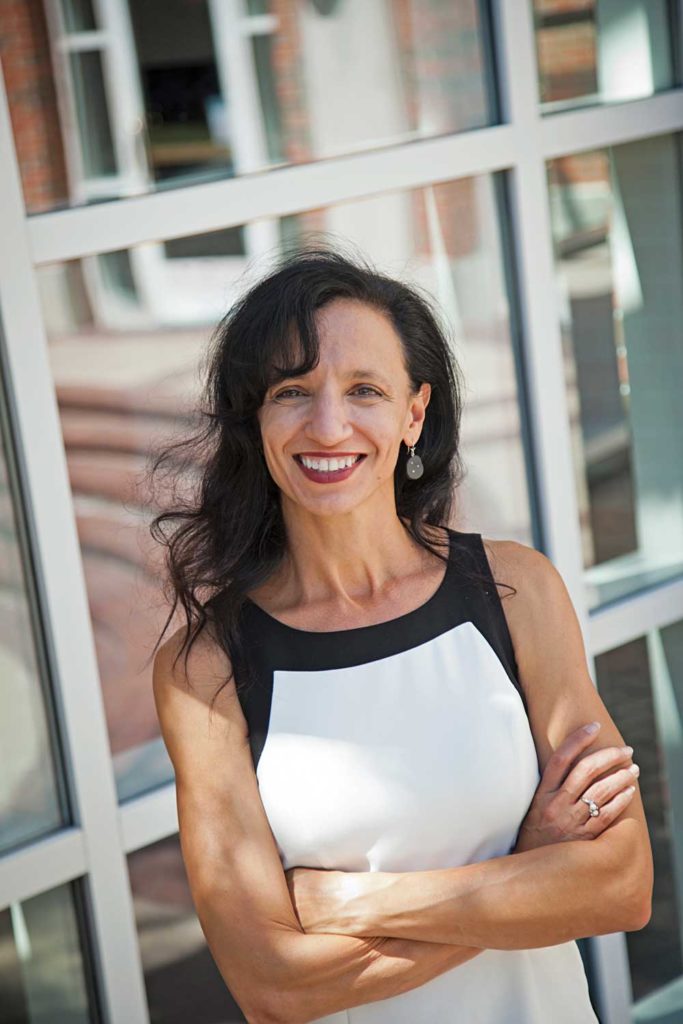This story is one of three about the state of funding for theatres of color. You can find the others here.
When asked to speculate, Zannie Voss (she/her), professor and director of SMU’s DataArts, simply doesn’t.
“I can tell you what we’ve found in the data,” she says instead. Working with Glenn Voss, her husband and research director, she turns that data into reports, including TCG’s annual Theatre Facts report. These reports help inform arts organizations, grantmakers, researchers, and other stakeholders about the state of the arts world today, what makes arts organizations successful, audience-building and marketing, and more.
One of her latest reports, “The Alchemy of High-Performing Arts Organizations, Part II: A Spotlight on Organizations of Color,” was undertaken in conjunction with the The Wallace Foundation. It is a follow-up to “The Alchemy of High-Performing Arts Organizations,” a report that studied successful arts organizations with an annual budget of at least $500,000. The budget floor of that report meant that the majority of organizations that serve communities of color, which have been historically under-resourced, were not considered. That’s precisely why The Wallace Foundation decided that a second report was in order.

Voss and her husband looked at the same indicators of a high-performing arts organization they had used in the previous report: working capital and debt ratio; unrestricted contributions from individuals; community engagement; occupancy expenses; surplus/deficit; revenue diversity; and revenue from subscriptions and memberships, or, in the case of community-based organizations, revenue from institutional funders.
The study, conducted during August and September of 2020, identified organizations that had long been high-performing, and ones that had turned things around in recent years. In the end, 11 nonprofit arts organizations and 10 community-based organizations were included, with annual budgets ranging from $146,000 to $15 million. Among them were the Apollo Theater, Dallas Black Dance Theater, East West Players, Theater Mu, and Idris Ackamoor & Cultural Odyssey.
In addition to crunching the numbers, Voss also spoke to the leaders of each of these organizations who, according to the report, described “a kind of ‘mental map’ or playbook” that showed how they built successful organizations.
The Same Foundation
One takeaway? The cornerstones for success were the same across both the original high-performing arts organization report and the arts organizations of color report.
“It was really affirming that we heard the exact same two things: It’s got to be community-oriented and high-quality programming,” says Voss about what arts leaders defined as the “alchemy” of success. For arts organizations serving BIPOC folks, however, the main emphasis was always on community—a focus that has become even more urgent during the pandemic.
“For many, the communities that they serve have been disproportionately affected by COVID,” Voss says. “Organizations that are serving Asian communities at a time of Asian hate and those serving African American communities where there’s a high level of police brutality, the mood is, How can we help our communities, which are in a state of crisis?”
“A vicious cycle of denying small organizations of color access to funding and then criticizing them for being small is really what’s at the heart of it.”
While many such arts institutions dug even further into their communities, their operational outlook remained good, due to innovation in virtual programming and increased funding opportunities. “COVID opened up an opportunity to make changes in structure, program, culture,” said one leader in the report. “It has been a license to change what would have taken much longer were the environment not so uncertain. What can we do now that will set us up post COVID? People have developed a taste for our digital programs now. There’s a space for us to claim.”
Other areas of internal operations are also key for being a successful nonprofit: mission alignment, adaptive capability, organizational culture, marketing and fundraising, and a multi-year planning horizon.
“There was a really stark level of similarity, as communicated by arts leaders across both studies, about how success happens,” Voss says, comparing the first “Alchemy” study with the more recent one focused on arts organizations of color. But there were areas of divergence: For instance, in the first report, leaders talked a lot about shifts in consumer preferences, whereas for the second report, Voss notes, “not a single organization of color mentioned changing preferences or declining audiences. They talked about racism, gentrification, and lack of access to funding.”
Diverging Concerns
Indeed, for arts organizations serving communities of color, racism can lead to challenges in day-to-day operations and has an impact on funding.
One artistic director reported: “The financial environment is totally different for us. No successful organization of color can have only one bank. There are many barriers to success. This happened recently even with PPP (federal government Payroll Protection Program) funds. The first bank perceived fraud due to the fact that we’re a Black institution. It took savvy, board members, and four banks for us to get PPP loans.”
Furthermore, some arts organizations are no longer in the communities they serve due to gentrification. All across America, marginalized communities have been pushed out of neighborhoods, leaving arts organizations searching for new locations.
Funding for arts organizations has also long been an issue, as evidenced by the fact that almost no arts organization of color qualified for the first report due to its $500,000 annual budget floor. The problem dovetails insidiously with racism and long-standing patterns of inequity.
“It’s more of a commentary on the inequality in arts philanthropy, which we’re starting to see change,” Voss says. “A vicious cycle of denying small organizations of color access to funding and then criticizing them for being small is really what’s at the heart of it.”
A controversial study from DeVos Institute of Arts Management claimed that too many arts organizations of color are competing for a small pool of funders. “I look at the flip side of that coin,” Voss says, “and say there are too few funders investing in organizations that serve communities of color.”
One artistic director put it this way: “Almost no theatre of color has a budget over $3 million. Until we reach $5 million, we don’t get access to commission funding or new-work development support. To funders, budget size conveys quality, excellence, and ability to deliver. There’s an inherent bias in providing organizations like us support.”
Another problem: Larger institutions suck up all the money for programs in diversity, equity, and inclusion, the very areas in which organizations already serving communities of color have been working for years.
“There’s been a huge discrepancy in terms of where grantmakers have directed funding historically,” Voss says. “I think that if the funding desire had been, ‘How can we help increase inclusion and accessibility of arts and culture for communities of color?’ then that funding would have gone to the organizations that have always served those communities.”
But large arts organizations also bear some blame. Voss wonders if many of these larger, mostly Eurocentric organizations would even do EDI work if funders weren’t offering grants for it.
“Grantmakers and organizations have to take ownership of the issue,” she says. In performing arts organizations, investments in EDI have increased racial and ethnic diversity somewhat, “but their audiences are not even 50 percent representative of the communities that they serve.” Worse yet, in many cases the community living close to a large arts organization may be 40 percent people of color, while the institution’s audiences are not even 20 percent people of color. “And when it comes to income diversity,” Voss added, “that’s gotten worse over time for these organizations, not better.”
For more on audiences, check out SMU DataArts latest report “The Intersection of Funding, Marketing, and Audience Diversity, Equity, and Inclusion.”)
“At the same time,” Voss notes, “the money wasn’t going to the organizations whose existence relies on doing this work.”
In the end, Voss says that one reason she did the report was that her hope that it may change the way grantmakers and other funders view their funding metrics and requirements.
“I think it’s easy to see a problem but not think that you’re complicit in creating it, or that you have the power to be part of the solution,” Voss says. “What I think they’re not necessarily cognizant of is the process of making funding decisions.” She wants funders to ask, “How equitable were those funding decisions, really? What kinds of barriers have they left in place to leave organizations of color out of the opportunities that were provided to other institutions?”
Keep the Baby, Throw Out the Bath Water
Access to funding and other financial problems are so thorny that some in the arts community have even suggested that the nonprofit model isn’t right for organizations that serve communities of color.
“It’s really not an either/or, it’s a both/and,” says Voss. There are many models that can work for different types of artists and organizations. “But I become concerned when it sounds like in order for another organizational form to take hold, it has to make culpable or scapegoat the nonprofit model in the process. I think it’s really just a question of what works well.”
Instead of jettisoning the nonprofit model, many arts organizations would do well to make sure they’re working the nonprofit model successfully—there are great tips about creating an effective board in the report—and not holding themselves to a “single metric of success,” i.e., size.
“You can be small and mighty,” says Voss. “You can be new and mighty and stable. Excellence happens everywhere.”
Rosalind Early (she/her) is associate editor of Washington Magazine at Washington University in St. Louis and was a member of TCG’s 2018 Rising Leaders of Color cohort.


